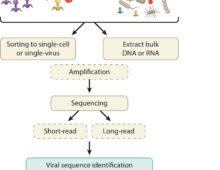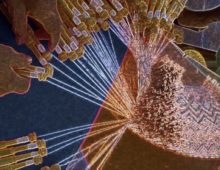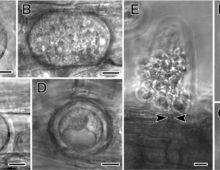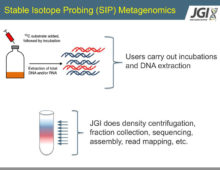Promoting the Power of Viral Metagenomics
JGI researchers summarized the field of viral metagenomics in an article for the journal Annual Review of Biomedical Data Science. [Read More]
 JGI researchers summarized the field of viral metagenomics in an article for the journal Annual Review of Biomedical Data Science. [Read More]
JGI researchers summarized the field of viral metagenomics in an article for the journal Annual Review of Biomedical Data Science. [Read More] Ian Rambo conducted part of his graduate work at the JGI through the DOE Office of Science Graduate Student Research (SCGSR) program. [Read More]
Ian Rambo conducted part of his graduate work at the JGI through the DOE Office of Science Graduate Student Research (SCGSR) program. [Read More] The JGI Data Portal offers a way for users to more easily access public data sets through a common set of “baseline metadata.” [Read More]
The JGI Data Portal offers a way for users to more easily access public data sets through a common set of “baseline metadata.” [Read More] A special issue of Synthetic Biology celebrates research enabled by the JGI DNA Synthesis Science Program. [Read More]
A special issue of Synthetic Biology celebrates research enabled by the JGI DNA Synthesis Science Program. [Read More] JGI’s plant data portal team highlights the latest Phytozome update while assuring users will continue to have straightforward access to the existing data and features. [Read More]
JGI’s plant data portal team highlights the latest Phytozome update while assuring users will continue to have straightforward access to the existing data and features. [Read More] In this guest blog: a behind-the-paper look at the fungus Olpidium, a link in the evolution and transition of fungi from aquatic to terrestrial habitats. [Read More]
In this guest blog: a behind-the-paper look at the fungus Olpidium, a link in the evolution and transition of fungi from aquatic to terrestrial habitats. [Read More] Montana State University graduate student Nick Reichart spent a year at the JGI through the DOE Office of Science Graduate Student Research (SCGSR) program. [Read More]
Montana State University graduate student Nick Reichart spent a year at the JGI through the DOE Office of Science Graduate Student Research (SCGSR) program. [Read More] Building upon the principles for open access in the field of genomics, the JGI recognizes the need to engage the community to inform necessary changes to JGI data policies. [Read More]
Building upon the principles for open access in the field of genomics, the JGI recognizes the need to engage the community to inform necessary changes to JGI data policies. [Read More] At the JGI and EMSL, various tools leverage stable isotopes to measure carbon and nutrient flux, and identify microbes assimilating labeled compounds. [Read More]
At the JGI and EMSL, various tools leverage stable isotopes to measure carbon and nutrient flux, and identify microbes assimilating labeled compounds. [Read More]